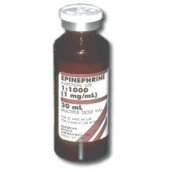Epinephrine in the Climber’s Medical Kit
As a recreational or professional climber, you gotta have epi in your kit. This was outlined in the previous wilderness medicine post. The need is most obvious in the warmer months when hymenoptera (bee-like) species are most active. And if you are working outdoors, the responsibility is likely yours to have the epinephrine ready when the wrong insect stings your client and they begin to have trouble breathing, low blood pressure, and scratchy throat. These are classic symptoms of anaphylaxis, a condition that usually responds readily to epinephrine. And for those with more training and advanced medical control, epinephrine can play a role in severe life threatening asthma exacerbations.
But how do you carry and administer epinephrine? At the very least, you need two doses of epinephrine carried in a durable, compact, lightweight package. There are various ways, and like most things in life the right solution varies with context. But for most climbers and their medical kits, I recommend either two single dose ampule vials, or multi-dose vial epinephrine. With minimal training, multiple dose vial epi administration can be mastered. Multi-dose and ampule epinephrine allows more medication in a smaller package for far less money than using the alternative–the Epi pen.
How to get it: In order to carry epinephrine and multi-dose epinephrine you will need training and a prescription for it. Consider discussing with a physician that knows you and your work and would be willing to work with you on this.
When to use it: Epi is given to patients experiencing anaphylactic reactions. This follows allergen exposure, and symptoms include high heart rate, rashes, nausea and vomiting, scratchy throat and low blood pressure. Seek medical training to learn how to diagnose this.
What you need: (for the multi-dose vials) : You will need a vial–typically 30ml– of epinephrine “1:1000″, two or three 1 ml tuberculin syringes and two or three 25 ga. 1” needles that will fit them. 1:1000 is read as “one to one thousand” and means that there is 1 gram of epinephrine in 1000 ml of fluid, or 1 mg of epinephrine in 1 ml of fluid. You need a protected carrying vehicle that will keep these materials safe. Larger syringes can be acquired with attached needles which is handy. However, using larger syringes with multi-dose vials make it more possible to improperly administer too much medicine. See the medical kits post explaining the single ampule epinephrine.
How to give it: Adults get 0.5 ml of the medicine in the upper outer thigh. This will mean that you will fill the syringe to the “0.5” ml mark on the syringe, about half of the syringe. Kids get about 1/3 of this dose. The dose can be repeated if necessary. People receiving epinephrine should be taken to the hospital as soon as possible.
If you haven’t already taken a wilderness medicine class, consider it strongly, most longer courses will cover administration of epinephrine.


